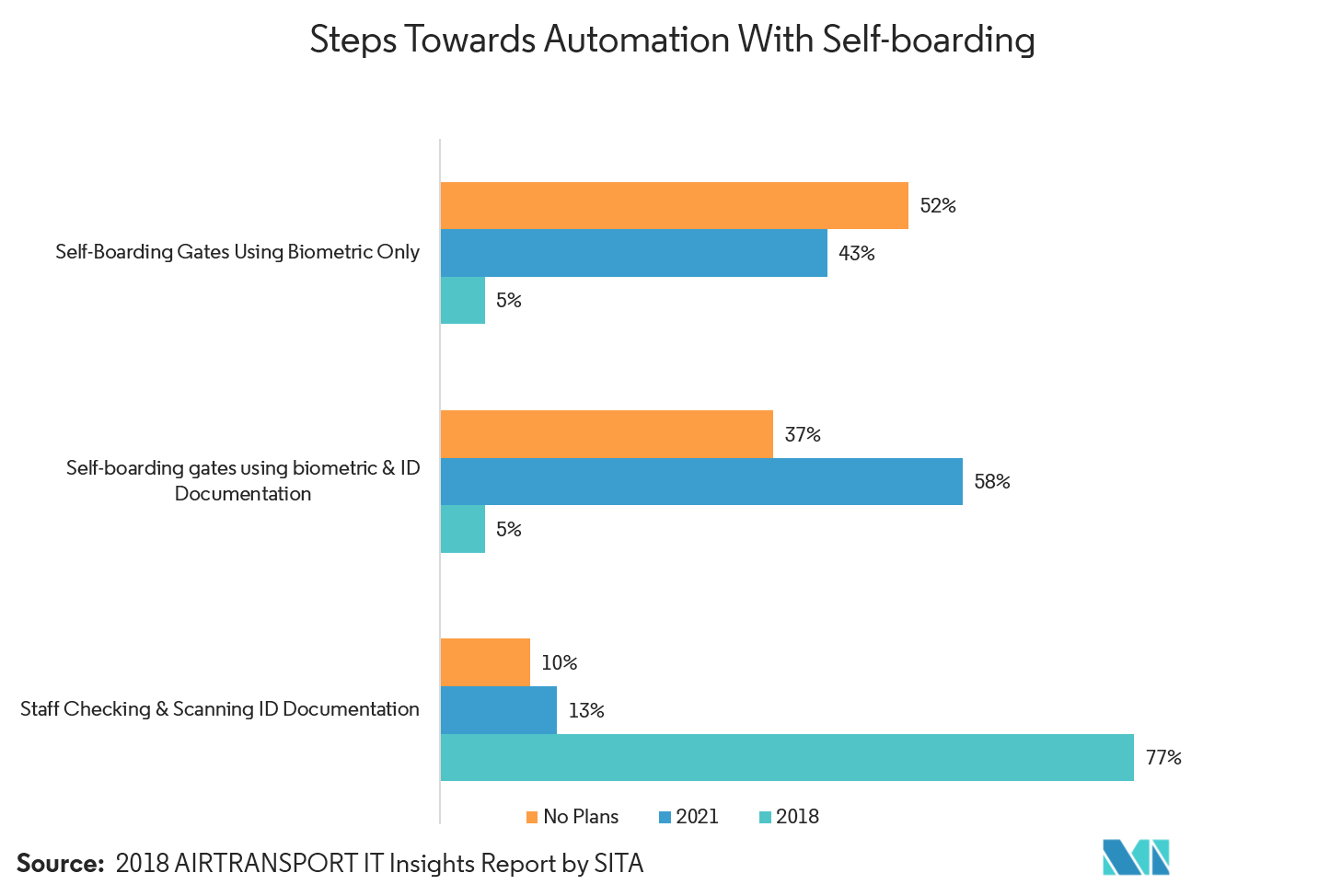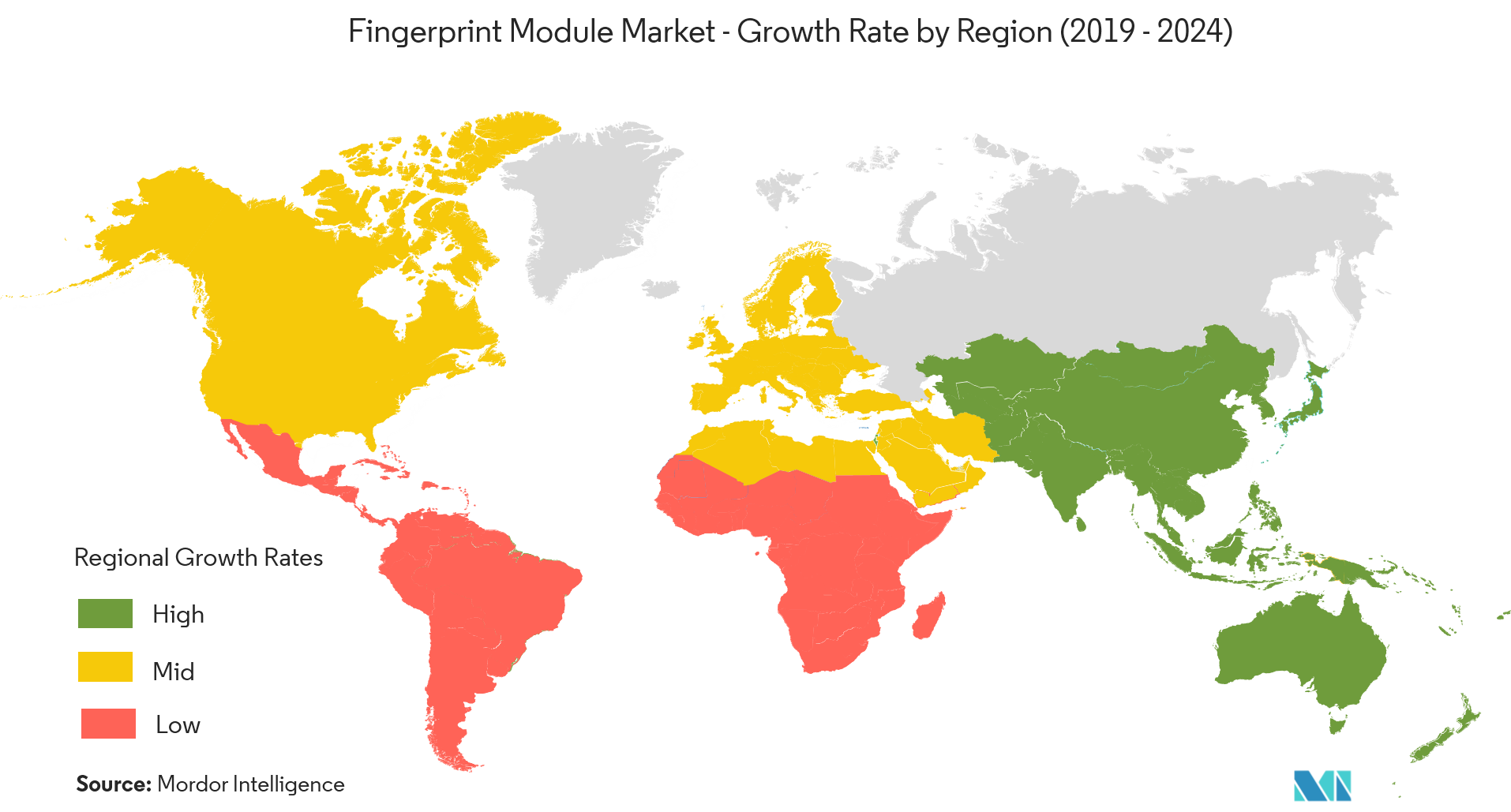Market Trends of Fingerprint Module Industry
This section covers the major market trends shaping the Fingerprint Module Market according to our research experts:
Aviation Sector will Increasingly Use Bio-metric Solutions to Enhance Security for Air Travellers
- Airlines and Airports across the globe are stepping up investments to ensure secure and easy travel for passengers, with 71 percent of airlines and 77 percent of airports planning major programs or research and development in biometric ID management, according to a recently published report by SITA. The report further adds that biometric self-boarding gates are projected to be used by 59 percent of airports by 2021. It is also anticipated that 63 percent of airlines will start using biometric self-boarding gates during the same period.
- Hartsfield-Jackson Atlanta International, LAX, and JFK are among 15 US airports currently testing the technology with airline partners such as Lufthansa, British Airways and Delta. Delta is already using fingerprint and eye scanning technology to let members into its ‘Sky Clubs’; car rental company Hertz also plans to roll out biometric screening at 40 airports in the US.
- A report just released by the U.S. Department of Homeland Security’s Inspector General has urged the Customs and Border Patrol to meet its goal to confirm all foreign departures with biometrics at the top 20 U.S. airports by 2021. CBP collects biometric information such as fingerprints and photos, to confirm identity and document nonimmigrant entry to the country.
- Indian passengers on domestic flights may soon be able to board without travel documents using a “DigiYatra” (DY) based on biometrics after a technical team made up of representatives from the Airports Authority of India (AAI) and the four private metro airports finalized its format, The Times of India reports. Travelers can obtain an optional DY ID from aviation ministry Airsewa portals, which were established in 2016 to handle grievances, by enrolling fingerprints and iris biometrics.

Asia Pacific will be the Fastest Growing Market
- Asia-Pacific will continue to be the fastest growing market during the forecast period. Underpinned by a culture of acceptance and readiness to embrace new technology, Asia’s realistic approach has made it convenient for the public to embrace fingerprint biometric systems.
- This augmented by government efforts has led to the creation of a vibrant economy for fingerprint sensors in this region. The 1.2 billion Indians with Aadhaar biometric identities today are globally the largest national population with digitally verifiable identities.
- The increasing demand for convenient and secure payment methods will further increase the demand for fingerprint biometrics within Asia’s payment ecosystem. Following a series of trials of the biometric fingerprint payment smart card systems, several leading card issuers and payment networks within APAC, such as Hengbao, Chutian Dragon and China Union Pay, are relentlessly working to bring the concept of biometric fingerprint authenticated payments to the Asian market.
- The other major reason why Asia- Pacific will continue to dominate the Fingerprint Module Market is the fact that it will continue to the fastest growing smartphone market in the world. In terms of subscriber growth according to the 'The Mobile Economy of Asia Pacific 2018' report, APAC will account for over half of new subscribers globally by 2025. The report further states that 424 million new subscribers are expected to get added across the region by 2025, taking the total to 3.2 billion, which is 73% of the population.

